 “If I get to see an Ansel Adams print in person, I always go right for the shadows. For me, that’s where his brilliance was.”
“If I get to see an Ansel Adams print in person, I always go right for the shadows. For me, that’s where his brilliance was.”
It’s striking to hear those words coming from Kaz McCue, whom I know to be a jolly fellow with a laugh like, well, a bowl full of jelly. Kaz, an instructor of visual arts at the Leelanau School, is locally famous for his laugh. It rings through any space he’s in.
 And yet his art gravitates toward stark drama. There’s a recurring motif of red against black. There’s a noirish sensibility. You can take the punk out of the New York punk scene, but you can’t take the scene out of the punk. Kaz’s New York City upbringing permeates his art, even in black-and-white photos of rural Leelanau County.
And yet his art gravitates toward stark drama. There’s a recurring motif of red against black. There’s a noirish sensibility. You can take the punk out of the New York punk scene, but you can’t take the scene out of the punk. Kaz’s New York City upbringing permeates his art, even in black-and-white photos of rural Leelanau County.
He’s a great example of how artists tend to be a bundle of contradictions. With his biker mustache and biker background, you think “tough dude.” With his love of corgis — he’s joined at the hip with his corgi named Quinn — and his sunny demeanor, you think “teddy bear.”
It all makes you wonder…do artists create the opposite of themselves? Is the relationship between an artist and their art like an opposites-attract love affair? Is an artist’s art a foil, a nemesis? Can you deduce who an artist is, deep down, by looking at their art and imagining the polar inverse? Maybe, notorious loner, Emily Dickinson was, deep down, a socialite. Maybe brooding composer Tchaikovsky confessed his inner self with The Nutcracker, a sparkling work he claimed to dislike.
But I digress.
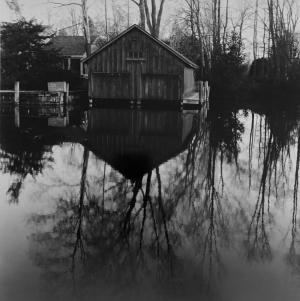 I caught up with Kaz on the phone as he was driving down to Florida, where his wife, Pam Ayres — also an accomplished artist and art instructor — resides. Kaz likes driving. “Time to think. Seeing stuff. Going places. I kind of grew up with that. We always took road trips.”
I caught up with Kaz on the phone as he was driving down to Florida, where his wife, Pam Ayres — also an accomplished artist and art instructor — resides. Kaz likes driving. “Time to think. Seeing stuff. Going places. I kind of grew up with that. We always took road trips.”
In his senior year of high school, his dad passed away. “That messed me up pretty good and changed my life. I was a jock. I played football. I was an honors student at a private high school. But I went to college and just wasn’t prepared.”
“Not emotionally prepared?” I ask.
“Yes. I got kicked out of school.”
 I should interject here to say that the Leelanau School, where Kaz teaches, specializes in educating kids with learning differences. “It’s one of those places that changes kids’ lives,” as Kaz puts it. “It’s noted because of its experiential programming. So, being in nature, and being outdoors, and giving kids different opportunities to learn, is kind of what the Leelanau School is about. One of our mottos is ‘It’s a different way to learn.’”
I should interject here to say that the Leelanau School, where Kaz teaches, specializes in educating kids with learning differences. “It’s one of those places that changes kids’ lives,” as Kaz puts it. “It’s noted because of its experiential programming. So, being in nature, and being outdoors, and giving kids different opportunities to learn, is kind of what the Leelanau School is about. One of our mottos is ‘It’s a different way to learn.’”
The story of Kaz’s youth provides a window into how he can relate so well to, and gain the trust of, his students.
“When I was down and out, just really ****ing my life up, one of my mom’s friends was next-door neighbors with this well-known artist named Michael Whelan. I was painting murals on jean jackets for my friends, many of whom were bikers. So I actually borrowed a bunch of jackets, because that was my artwork, and I took them to his house.
 “He said ‘You have some talent, but you’re stupid if you don’t go to school and cultivate it.’ A couple of days later, I was working in a factory, and I quit my job, and I moved to Florida.”
“He said ‘You have some talent, but you’re stupid if you don’t go to school and cultivate it.’ A couple of days later, I was working in a factory, and I quit my job, and I moved to Florida.”
There, Kaz studied studio art at St. Petersburg Junior College. He went on to earn a Bachelor of Fine Arts degree in photography from Parson’s School of Design, and a Master of Fine Arts degree in mixed media from Long Island University/C.W. Post Campus.
“What I’m really about as an artist is being a visual storyteller. Depending on the story, the materials and techniques change. I’m what you would call a mixed media artist,” Kaz tells me. Perhaps another term you could use for Kaz (which I just made up) is an all-media artist. Kaz has worked in a lot of realms. “I started in ceramics and crafts. Then I moved to photography. Then I moved to printmaking. And then I moved to sculpture and installation.” I ask him if this background in so many different types of media has aided him as an art teacher. “Absolutely,” he answers.
At the Leelanau School, Kaz teaches studio art, which encompasses drawing, painting, sculpture, printmaking, photography, graphic design…etc. The full gamut of visual art.
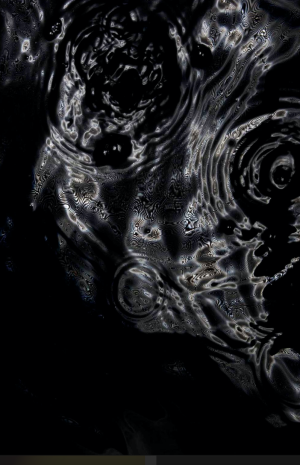 But tellingly, our conversation somehow drifts back to Ansel Adams, and I get the feeling that Kaz’s heart of hearts is with old-school black-and-white photography, a craft he learned back in the day when you needed to master “photographic math, photographic chemistry, black-and-white printing, studio lighting, everything.” His voice takes on a different tone when he talks about Adams. It’s a tone I recognize. Reverent. Serious. Rhapsodic. It’s how I sound when I talk about my dearest artistic influences.
But tellingly, our conversation somehow drifts back to Ansel Adams, and I get the feeling that Kaz’s heart of hearts is with old-school black-and-white photography, a craft he learned back in the day when you needed to master “photographic math, photographic chemistry, black-and-white printing, studio lighting, everything.” His voice takes on a different tone when he talks about Adams. It’s a tone I recognize. Reverent. Serious. Rhapsodic. It’s how I sound when I talk about my dearest artistic influences.
On Adams: “His technical ability is so precise, so amazingly complicated, but it just adds to the beauty of his photographs.”
Adams’s story ties in with Kaz’s story; with Kaz’s connection to his students; and with our setting, the Sleeping Bear Dunes National Lakeshore.
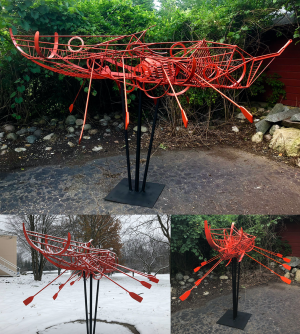 “Ansel Adams had really awful ADHD, and he kept getting kicked out of school. His dad put an educational program together for him, and part of that was training in classical piano. He went into the music field as a concert pianist. And quite shortly after, because he didn’t like musicians, he dedicated himself to photography. As a kid, he struggled, but he ended up being one of the greatest photographers in the world, so much so that his work had an influence on the creation of national parks, and how Americans thought about nature.”
“Ansel Adams had really awful ADHD, and he kept getting kicked out of school. His dad put an educational program together for him, and part of that was training in classical piano. He went into the music field as a concert pianist. And quite shortly after, because he didn’t like musicians, he dedicated himself to photography. As a kid, he struggled, but he ended up being one of the greatest photographers in the world, so much so that his work had an influence on the creation of national parks, and how Americans thought about nature.”
As a lover of old movies, I understand the obsession with black-and-white. But I have to ask Kaz…why does he love it so much?
“It strips reality down to its basic form. There’s an intellectualism to black-and-white photography that you don’t get with color, and that you don’t even get with painting and drawing. Color is about emotion, not intellect or information.”
 This enthusiasm for “information,” for austere “intellectualism,” is totally at odds with the warm and cheerful Kaz that I know. And again, it goes to show, you can’t judge an artist by his cover.
This enthusiasm for “information,” for austere “intellectualism,” is totally at odds with the warm and cheerful Kaz that I know. And again, it goes to show, you can’t judge an artist by his cover.
I ask him the same question I ask every artist I interview for this blog. Why Leelanau? What is it about Leelanau that’s so conducive to art?
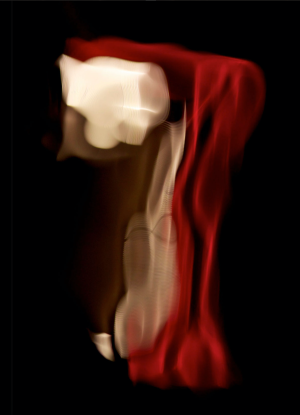 “[Leelanau] changes through the year. The winter’s really quiet. And I’ve been thinking about this a lot. I grew up outside of New York City. There’s a level of noise and activity that you kind of get used to. And even when I go down to Florida, there’s traffic, there are cars coming and going, there are people walking around. The level of noise is kind of constant. In Leelanau, it’s really easy to get away from distractions and put yourself in a place where you can think clearly. Especially when you’re creating, distractions can be really disruptive. If you’re gonna get distracted by nature, you actually have to slow yourself down. And open yourself up.
“[Leelanau] changes through the year. The winter’s really quiet. And I’ve been thinking about this a lot. I grew up outside of New York City. There’s a level of noise and activity that you kind of get used to. And even when I go down to Florida, there’s traffic, there are cars coming and going, there are people walking around. The level of noise is kind of constant. In Leelanau, it’s really easy to get away from distractions and put yourself in a place where you can think clearly. Especially when you’re creating, distractions can be really disruptive. If you’re gonna get distracted by nature, you actually have to slow yourself down. And open yourself up.
“Yesterday when I was headed to school, I was letting Quinn out, and the birds were chirping. I took a minute, and I sat down outside, and I just listened. And the more I listened, the more I heard. It’s not the din of the city. It’s quieter. And you really have to listen.”
 I think that’s a profound, and ironic, point. The peace, the silence, and the natural splendor of Leelanau force you to lean in closer and focus more, which can be challenging. In the hubbub of urban environments, distractions are like an escape hatch — a release of mental pressure. But when there are very few distractions, the pressure is ramped up, and your focus on your art becomes more intense. Peace and quiet aren’t for the faint-hearted! Go calm or go home, you might say. Peace can be the opposite of peace, and distractions can be peace.
I think that’s a profound, and ironic, point. The peace, the silence, and the natural splendor of Leelanau force you to lean in closer and focus more, which can be challenging. In the hubbub of urban environments, distractions are like an escape hatch — a release of mental pressure. But when there are very few distractions, the pressure is ramped up, and your focus on your art becomes more intense. Peace and quiet aren’t for the faint-hearted! Go calm or go home, you might say. Peace can be the opposite of peace, and distractions can be peace.
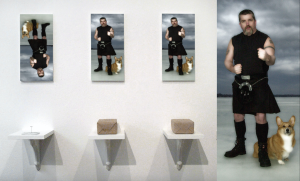 Kaz makes another point about Leelanau which echoes what other artists have told me: there’s something about the light here. In my interview with Becky Ross of the Old Art Building in Leland, she speculated that the magical light of Leelanau might have something to do with our location on the 45th parallel — the same parallel as Provence, France (historically a haven for plein air artists).
Kaz makes another point about Leelanau which echoes what other artists have told me: there’s something about the light here. In my interview with Becky Ross of the Old Art Building in Leland, she speculated that the magical light of Leelanau might have something to do with our location on the 45th parallel — the same parallel as Provence, France (historically a haven for plein air artists).
“One thing about Leelanau County is the light is really wonderful here,” Kaz says. “Last week I was printing a lot of my photographs, and I was like ‘The light here is so cool!’ It isn’t too harsh. It’s soft, warm, not too stark.”
 Soft, warm, and not too stark is the opposite — there’s that word again — of how I’d describe Kaz’s artwork. But again, opposites attract. And the charged, ethereal light of Leelanau inspires a broad array of artistic styles. From the tumultuous to the tame. From the placid to the passionate. And everything in between.
Soft, warm, and not too stark is the opposite — there’s that word again — of how I’d describe Kaz’s artwork. But again, opposites attract. And the charged, ethereal light of Leelanau inspires a broad array of artistic styles. From the tumultuous to the tame. From the placid to the passionate. And everything in between.